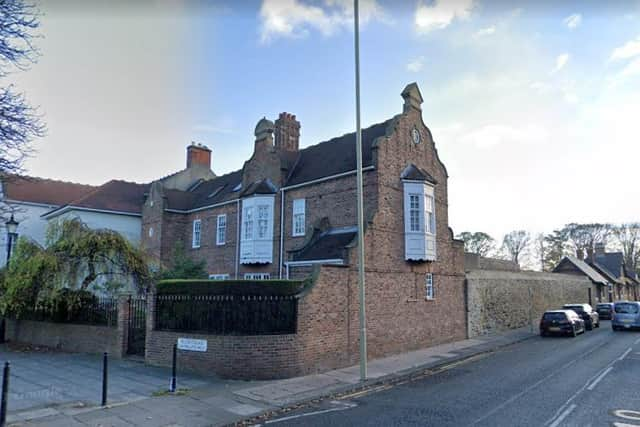Applicant loses appeal over rejected plans for uPVC windows on historic house in Westoe Village, South Shields
and live on Freeview channel 276
Back in October 2021, South Tyneside Council’s planning department received a planning application for 10 Southgarth West, in the Westoe ward.
This included replacing existing timber windows to the front and side elevations with modern materials in the form of white uPVC sliding sash windows.
Advertisement
Hide AdAdvertisement
Hide AdPlans sought to match existing window patterns and detailing, with the replacement windows aiming to provide “improved weather resistance”.


The property, which is visible from Sunderland Road, was Grade-II listed up until 2011 when it was officially ‘de-listed’ by Historic England.
However, South Tyneside Council still class the property as a “valuable non-designated heritage asset”.
During consultation, the local authority’s historic environment officer said the proposals were “inappropriate” and would cause harm in terms of “heritage significance”.
Advertisement
Hide AdAdvertisement
Hide AdAfter considering the appeal, planning inspector C. Megginson dismissed it and upheld the council’s original refusal decision.
A decision report published in May, 2022, sets out the reasons for the ruling.
This includes the replacement window plans causing harm to the dwelling and conservation area and clashing with policies aiming to ‘protect, preserve and where possible enhance, the character and appearance of heritage assets’.
Advertisement
Hide AdAdvertisement
Hide AdRepresentations from the appellent, referenced in the decision report, said it would be “impossible to distinguish whether the windows are timber or uPVC without extremely close inspection”.
However the planning inspector was not convinced, based on the evidence provided, that the “finish would be similar to that created by painted timber”.
The planning inspector’s report states: “uPVC is a material that has an artificial texture and a more sheer and uniform finish, when new and when aging, than painted timber windows.
“While the matching colour of the proposed uPVC windows would provide some harmony with other windows in the street, it would still be possible in my view to discern them as modern insertions that would be an incongruous intrusion into the historic street scene.”
Advertisement
Hide AdAdvertisement
Hide AdThe decision report adds that uPVC windows had been installed in other properties in the street, but these tended to be “isolated examples that failed to harmonise with the overall character and appearance of fenestration in the conservation area.”
While acknowledging the impact on the conservation area as a whole would be “less than substantial”, the planning inspector said the benefits of the scheme at 10 Southgarth West would not outweigh this harm.
The decision report goes on to say: “In weighing it against the public benefits of the proposal, the appellant has suggested that the scheme would enhance energy efficiency, reduce road noise and pollution levels and eliminate water ingress.
“However, I have not been presented with substantive evidence to suggest that uPVC windows significantly outperform well installed and maintained timber windows in this regard, which could also be double glazed.
Advertisement
Hide AdAdvertisement
Hide Ad“Putting aside the above being mainly private benefits, when taken together, they would not be sufficient to outweigh the harm that I have found, and to which I am required to attach great weight.”
The full appeal decision report can be found on the Planning Inspectorate’s website by searching appeal reference: APP/A4520/D/22/3292038